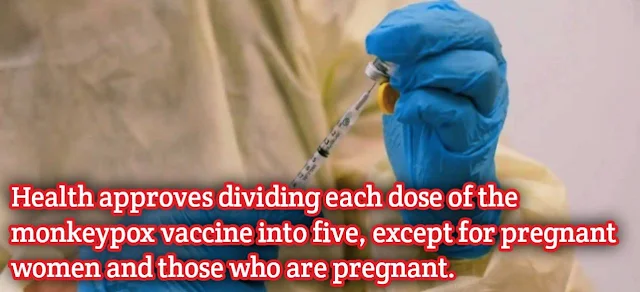Health approves dividing each dose of the monkeypox vaccine into five, except for pregnant women and those who are pregnant.
The Public Health Commission on Monday approved one-fifth of the total monthly vaccination against monkey pox for people over the age of 18. It should be administered intravenously, except in pregnant and uncompromising women, who will inject the full dose (1.5 mL) through the skin.
 |
| A health worker prepares a monkey pox vaccine in New York, United States AP PHOTO/MARY ALTAFFER. |
The technicians of the Ministry of Health and the meeting of autonomous communities have taken this decision unanimously in the proposal of the vaccination conference, and after the European Medicines Agency approves the practice, it will further affect the dose available in each pot.
After reviewing data from a clinical study conducted with 500 adults, the European regulator concluded last Friday that one-fifth of the usual dose (0.1 ml) produced the same level of antibodies intravenously as those who received the usual dose subcutaneously (0.5 ml).
It comes in 5000 doses which can be used for up to 25,000 people.
The Ministry of Health announced on Monday the arrival of 5,000 additional doses of Immanent vaccine against monkey pox, in addition to the 5,300 received in June and the more than 7,000 received in August. A total of more than 17,000 full doses have arrived in our country so far However, after the recent decision of the Public Health Commission, the last batch of 5,000 can be given to up to 25,000 people.
The vaccine, marketed by Danish laboratory Bavarian Nordic, has been approved in the European Union since 2013 to prevent traditional smallpox and is estimated to be 85% effective. Currently, in Spain it is indicated for people under the age of 45 who engage in high-risk sexual practices, "mainly, but not exclusively, for homosexuals, bisexuals and other men who have sex with men, who are pre- Exposure indicators HIV.
Close contacts of confirmed cases are also vaccinated, especially those at risk of severe disease (children, pregnant women, uncompromising persons), and health and laboratory workers who work with the disease and in some cases using protective equipment.
These doses must be kept deep-frozen to ensure their quality, safety and efficacy, and have been made available to the public health authorities of the autonomous community to control the disease, which has more than 6,000 confirmed cases.
Comments
Post a Comment
Please do not enter any spam link in the comments box